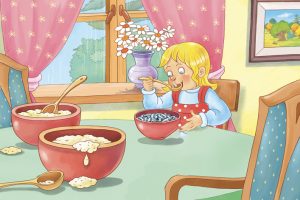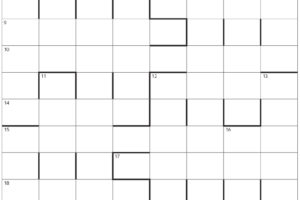By Stephen Meskin
A standard pair of dice is a common object about which to pose probability problems. Sometimes the solutions to the problems are easy if one understands the basic principles of probability. At other times, no matter how well one understands the basic principles, the solutions are not so easy.
When a problem is hard, it is often helpful to see if by simplifying it one can get a hint at the solution to the original problem. With the case of dice, one possible simplification would be reducing the number of sides on each die.
Let me clarify what I mean by an n-sided die. It is a mathematical object with n-faces labeled 1,2, …, n, which when tossed shows one of them, i, with probability p(i), where, of course, p(1) + p(2) + …+ p(n) = 1. For a standard die n=6 and p(1) = p(2) = …= p(n) = 1/6. For example, we could think of a two-sided die as just a coin with one side labeled 1 and the other side labeled 2. In general, an n-sided die need not be balanced, that is, the probabilities p(i) might not be 1/n.
Problem 2 concerns a pair of six-sided dice that don’t have to be balanced nor equal to one another; but to ease you into it, consider first the problem for a pair of two-sided dice. If I toss a pair of balanced two-sided dice, then there will be three possible face sums: 2,3, or 4, with probabilities ¼, ½, and ¼, respectively.
Problem 1. Can probabilities be assigned to a pair of two-sided dice so that the three possible face sums will have equal probabilities?
That is, can we set the probabilities of one two-sided die to p(1) and p(2) and the probabilities of a second two-sided die to q(1) and q(2) such that the three possible face sums will each have probability 1/3. If yes, show how; if no, show why not.
Comment: You may find a very algebraic solution to Problem 1, but there are other solutions that will generalize to Problem 2.
Problem 2. Can probabilities be assigned to a pair of six-sided dice so that the 11 possible face sums will have equal probabilities? Again, show it.
Let’s go back to the two-sided dice.
Problem 3. Can probabilities be assigned to a pair of two-sided dice so that the sums 2, 3, and 4 will have probabilities 1/7, 4/7, and 2/7, respectively? Again, show it.
The following problem is for extra credit.
Problem 4. Find a set S of conditions on the probabilities A, B, and C, that are satisfied if, and only if, probabilities can be assigned to a pair of two-sided dice so that the three face sums 2, 3, and 4 will have probabilities A, B, and C, respectively. For example, the set of conditions, S, should contain A + B + C = 1. What else?
Solutions may be emailed to cont.puzzles@gmail.com.
In order to make the solver list, your solutions must be received by October 1, 2022.
Solutions to previous puzzles: The Kids These Days
What is the probability of being immortal from playing the dice game? Note that this is just the probability of 1 – (1/2)2 × (1/4)2 × (1/6)2 × (1/8)2 ×…. There are a bunch of ways this can be solved, either through a spreadsheet or using Euler’s Format of the infinite product, but either way the probability of being immortal is equal to 2/π, or approximately 0.6366.
What is the probability of a pencil landing in two wooden planks when thrown randomly in the air? This is simply a Buffon’s Needle problem.[1] The length of the pen equals length of the board, so l=t and the probability of a pen landing on two wooden planks is (2/π) × (l/t) = (2/π) × (1/1) = 2/π.
Note that the solution’s to both problems are the same (one solver insisted that I should have saved this problem for March in honor of Pi Day). Alas, I don’t have a good explanation as to why these two seemingly unique puzzles have the same answer.
Solvers: Jean-François Bernard, Boris Brizeli, Bob Byrne, David Engelmayer, Bill Feldman, Nick Fiechter, Jerry Francis, Rui Guo, Clive Keating, Chi Kwok, Brian Mackintosh, David Promislow, John Snyder, and Al Spooner.
Endnote
[1] See https://en.wikipedia.org/wiki/Buffon%27s_needle_problem for a more detailed explanation.




